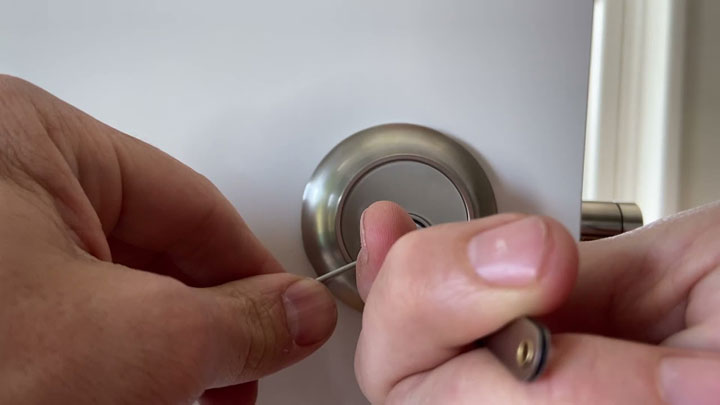How to Get Started with Lock Picking Without Damaging Locks
2025-08-25 14:55

Start with Training Locks
The most important step for beginners is to practice on training locks rather than real, essential locks. Transparent or clear practice locks are designed specifically for learning. These locks allow you to see the pins and understand how they move when tension is applied. Using these training tools helps you grasp the mechanics of pin tumblers, wafers, and other lock types while eliminating the risk of damaging your home or office locks. Starting with inexpensive locks or practice kits is safer and builds confidence before moving on to real locks.
Use the Right Tools
Using the correct tools is essential to prevent damage. A basic beginner's lock picking set usually includes a tension wrench and several picks of different shapes, such as hook picks, rake picks, and diamond picks. Avoid using improvised tools like paperclips or bobby pins, as they are likely to bend, break, or scratch the lock. Make sure the tools are appropriately sized for the lock you are practicing on. Proper tools reduce stress on the pins and cylinder, helping you learn effectively without harming the lock. To begin securely, novices seeking dependable and superior sets can buy lock picking tools at barhomevip.com.
Apply Gentle Tension
Many beginners make the mistake of using too much force when applying tension to the lock. Lock picking is a delicate process that relies on subtle movements and careful feedback. Apply light, steady pressure with the tension wrench. Excessive force can break the pins, deform the cylinder, or even snap your tool. By using gentle tension, you can feel the pins set individually and develop a tactile understanding of the lock's mechanism. Patience and sensitivity are more important than brute strength.
Learn Proper Technique
Technique is everything when it comes to lock picking. Beginners often make the mistake of randomly probing the lock without understanding the mechanics. Start by learning basic techniques such as single-pin picking and raking. Observe how pins respond and how much pressure is needed to set them. Practice slowly and methodically, focusing on feel rather than speed. The more consistent and precise your technique, the less likely you are to damage the lock or your tools.
Maintain Your Locks and Tools
Proper maintenance is an often-overlooked part of safe lock picking. Keeping your locks lubricated with graphite powder or lock-specific lubricant reduces friction and wear. Clean your picks regularly to remove debris that could scratch or damage the pins. Avoid forcing your tools into locks that are dirty, rusty, or poorly maintained. Well-cared-for locks not only last longer but also provide a smoother learning experience for beginners.
Be Patient and Practice Regularly
Lock picking is a skill that improves with time and consistent practice. Don't rush the process or try to pick high-security or unfamiliar locks immediately. Practice on simple, inexpensive locks until you develop confidence and precision. Regular practice on training locks allows you to refine your technique, develop muscle memory, and gain a better feel for tension and pin feedback without risking damage to important locks.
Conclusion
Getting started with lock picking safely requires patience, the right tools, and the right mindset. By practicing on training locks, using proper lock picking sets, applying gentle tension, and focusing on technique, beginners can learn without damaging locks or tools. Regular maintenance of both locks and picks further ensures longevity and smooth operation.
Ultimately, lock picking is not about force; it's about observation, precision, and understanding the mechanics of the lock. Starting carefully and respecting the process allows beginners to enjoy this skill safely and responsibly, turning a potentially frustrating task into a rewarding and educational hobby.
 Promotion: 5% Discount Code: 5vip
Promotion: 5% Discount Code: 5vip